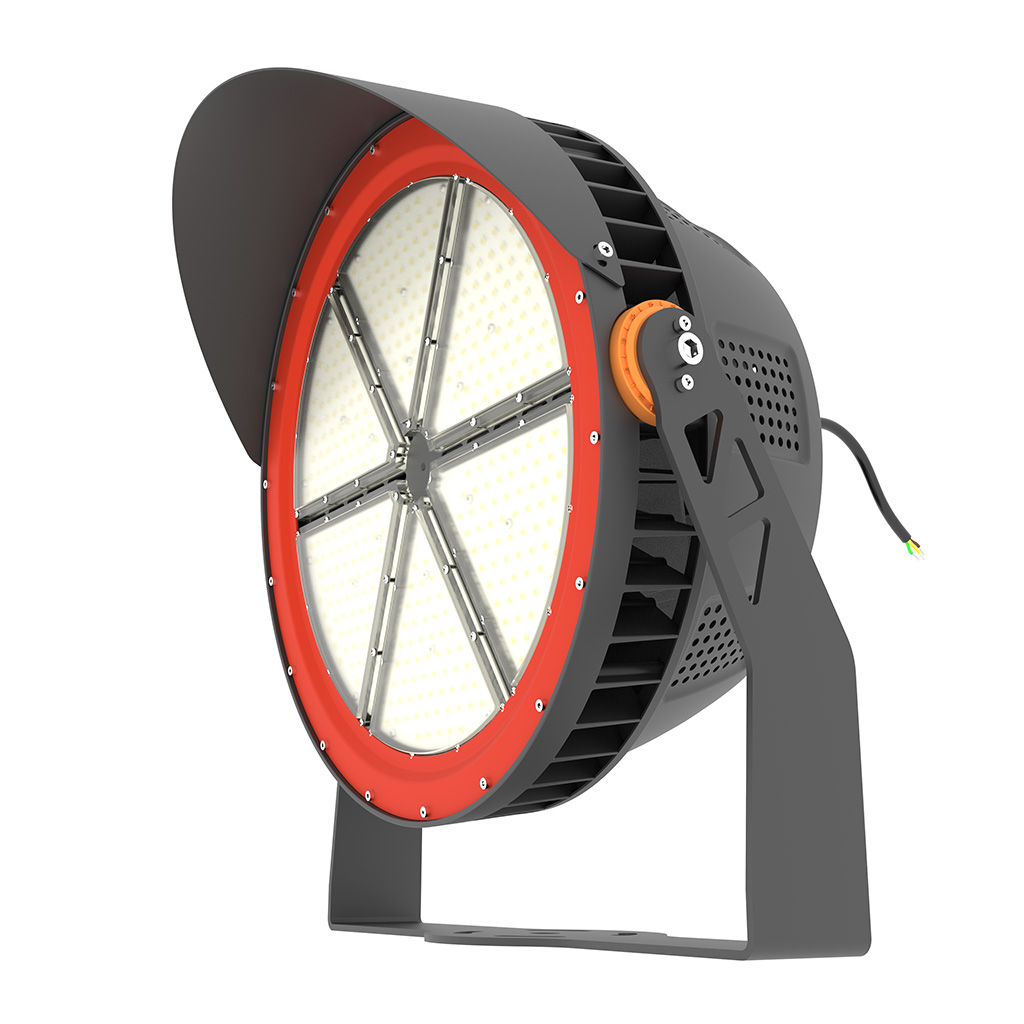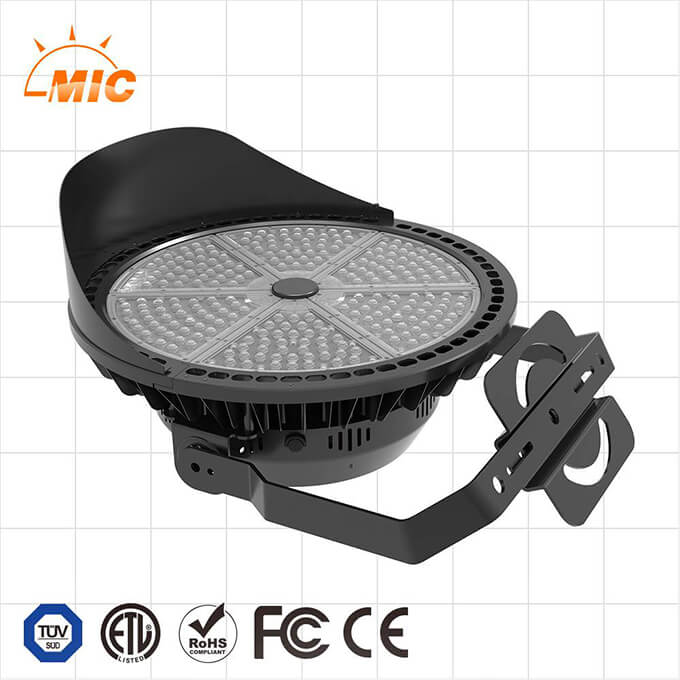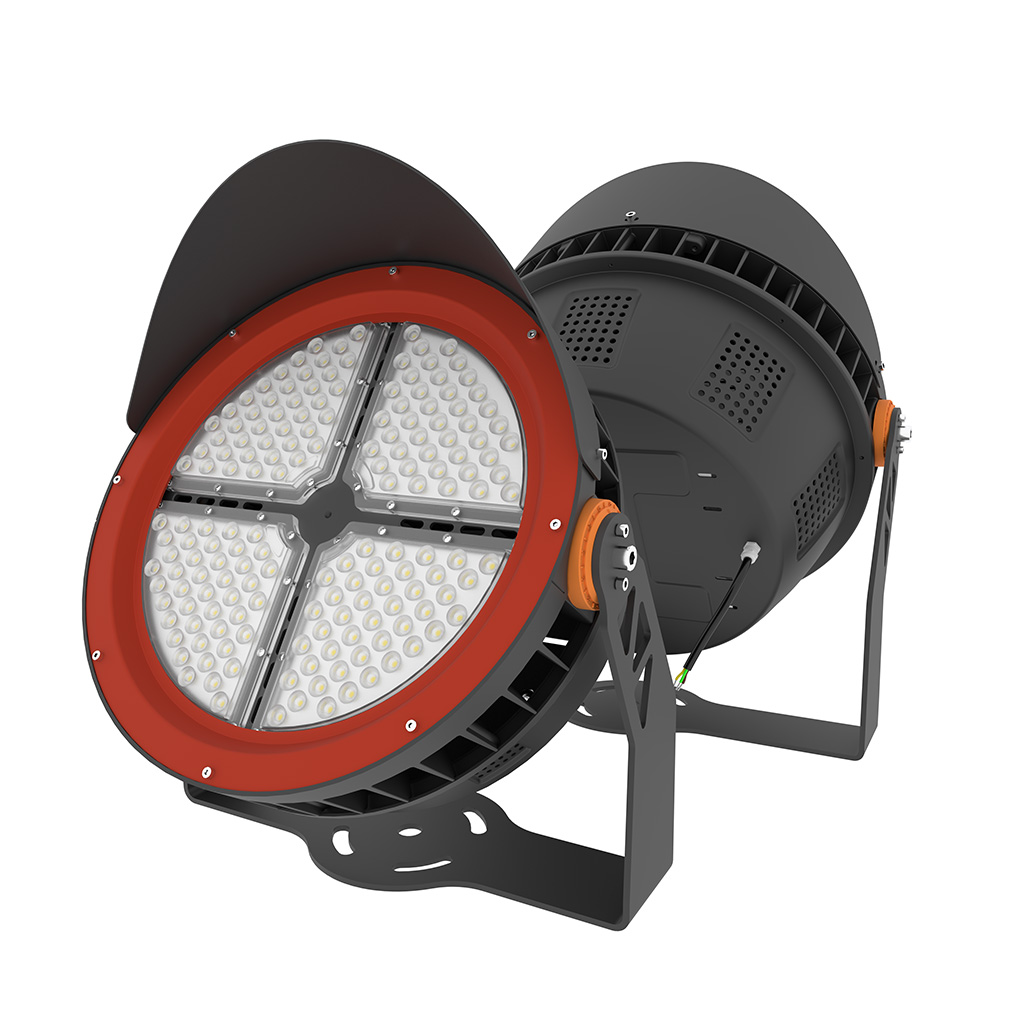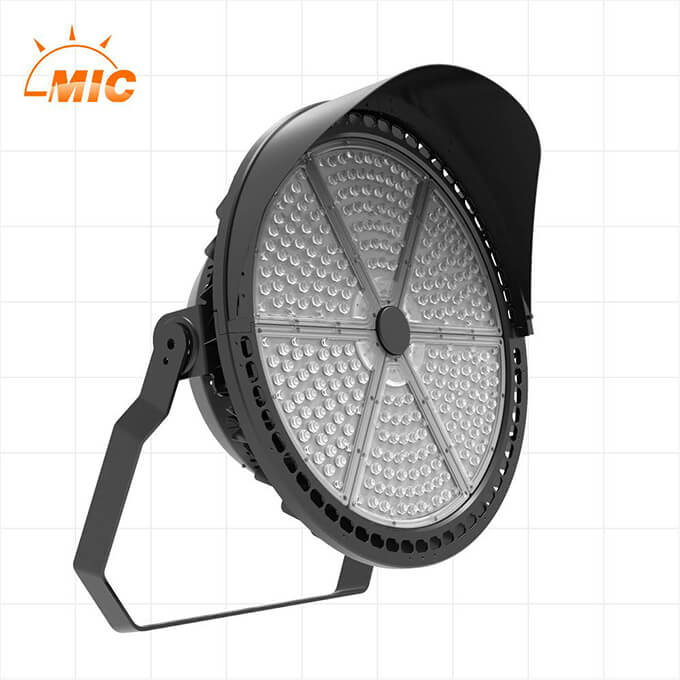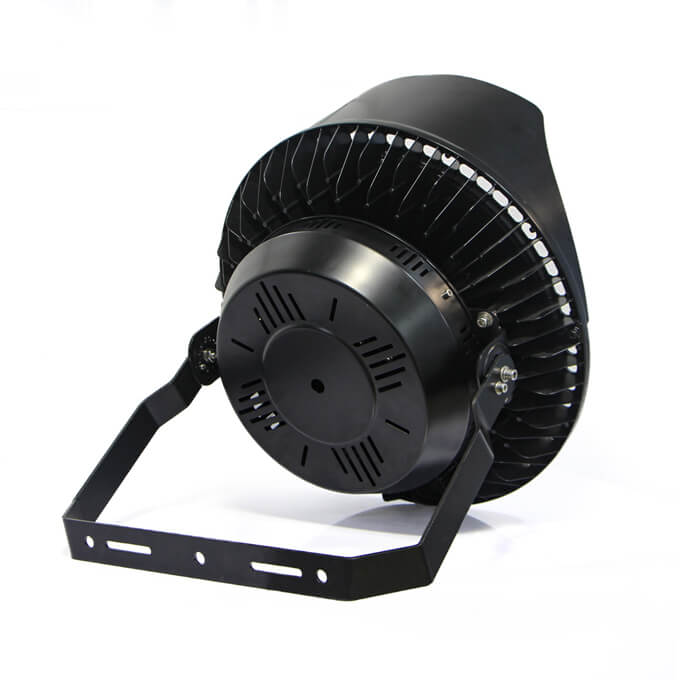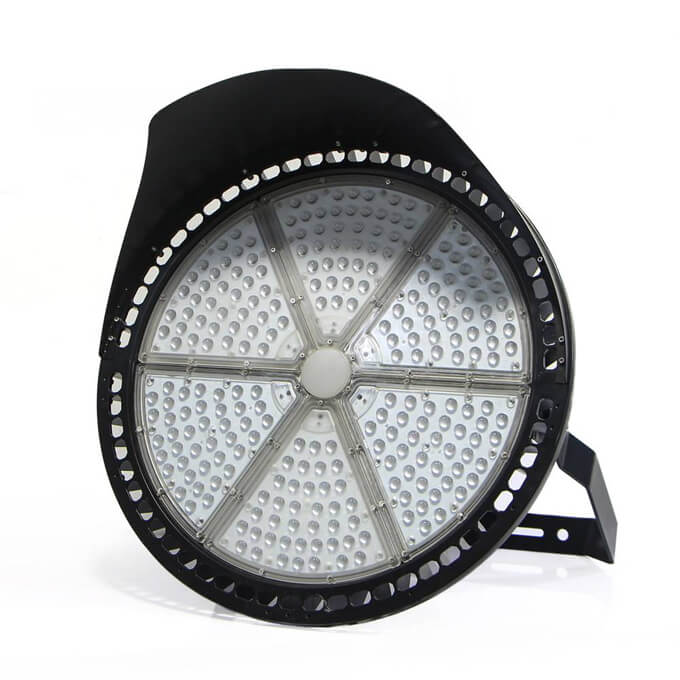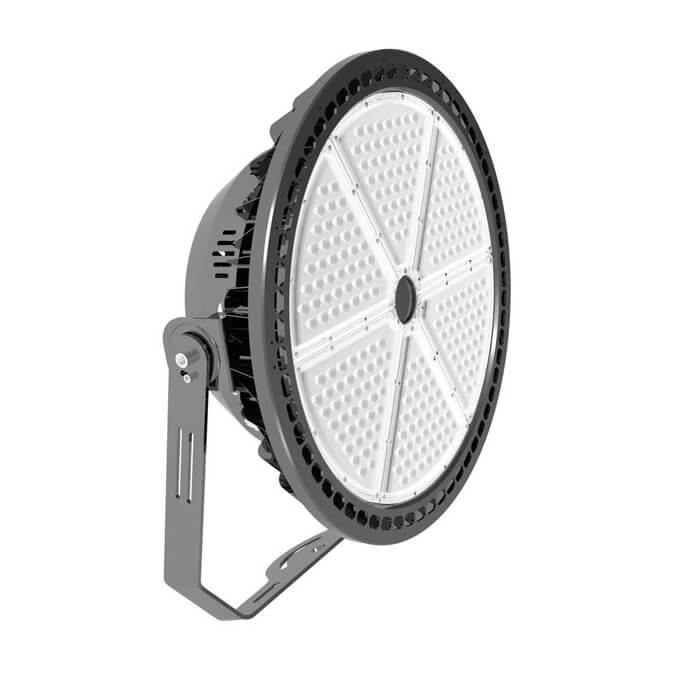Projecteur série R
Introduction au projecteur LED R
Shenzhen MIC Optoelectronics Co., Ltd. a été fondée en 2005 et est située dans le district de Longgang, à Shenzhen, dans le Guangdong. Étant donné que la société LED est parmi les leaders de l'industrie, elle se spécialise dans l'éclairage intérieur et extérieur à LED haute puissance, y compris le projecteur de la série R. Il s'agit d'une société leader de services d'exploitation intégrés dans le domaine de l'optoélectronique LED, qui se concentre sur la recherche et le développement de produits d'éclairage LED, la production et la vente. La société dispose également de lignes de production de produits standard, de droits d'importation et d'exportation autonomes et d'une gestion professionnelle.
En outre, ils ont des équipes de recherche et développement, de fabrication et de marketing, avec plus de centaines d'employés. Ils fabriquent différents produits tels que des lampadaires à LED haute puissance, des lampadaires solaires à LED, des luminaires LED pour grande hauteur, des luminaires pour tunnel à LED, des tubes à LED, des ampoules à LED, des projecteurs à LED, des éclairages sur rail à LED, des éclairages d'ingénierie à LED, des plafonniers à LED et d'autres Les luminaires d'intérieur et d'extérieur à LED de puissance et les produits solaires à LED, qui présentent les avantages d'économie d'énergie, de protection de l'environnement et de longue durée de vie, sont largement utilisés dans l'éclairage, la signalisation routière, l'éclairage urbain et d'autres domaines.
La société a également passé la certification internationale du système de qualité ISO9001 et la certification internationale du système de gestion environnementale ISO14001. Il a UL, TUV, CE, ROHS, FCC et d'autres rapports de test et de certification internationaux pour divers produits.
Survivre par la qualité et se développer par l'innovation. Shenzhen Chuangqi Optoelectronics insiste sur l'innovation technologique pour le développement, en adhérant au principe de "servir les clients de tout cœur", en fournissant aux clients des produits de haute qualité et un service après-vente parfait. Par conséquent, la société est disposée à coopérer avec de nouveaux et anciens clients et à se développer ensemble sincèrement.
Lieux applicables
Les projecteurs à LED de la série R sont principalement utilisés dans les bâtiments individuels, l'éclairage mural extérieur des bâtiments historiques, l'éclairage intérieur et extérieur des bâtiments, l'éclairage paysager vert, l'éclairage des panneaux d'affichage et d'autres installations spéciales, les bars, les stades, les places, les gares ferroviaires, les navires, chantiers de construction, grues à tour et autres éclairages.
| N ° de modèle | MFL-R500 | MFL-R600 | MFL-R800 |
| Consommation d'énergie | Projecteur 500W | Projecteur 650 W | Projecteur 800W |
| NW / Taille | 19kg/652*565*206mm | 21kg/652*565*206mm | 23kg/652*565*206mm |
| Flux lumineux | >65000LM | >78000LM | >104000 |
| Emballage | 682*612*245mm,1 pièces/CTN | ||
| Angle de faisceau | 15/35° | Classe IP | IP65 |
| CCT | 2700-6500K | Taux PF | > 0,95 |
| efficacité lumineuse | >130lm/W | CRI | > 80 |
| Durée de vie | 50000h | Garantie | 5 années |
Caractéristiques du produit:
1 : La coque du projecteur de la série R adopte une dissipation thermique intégrée en aluminium moulé sous pression, le corps principal est rond et l'arrière est composé d'une alimentation et d'un support de corps principal.
2 : structure de la coque : en raison de l'utilisation du processus de moulage sous pression, la lampe entière n'a pas trop de joints, plus un joint étanche, le niveau d'étanchéité de la lampe est IP65, et il y a une conception de trou de respiration, qui peut se décharger. la brume à l'intérieur de la lampe lorsqu'elle est mouillée.
3 : Caractéristiques fonctionnelles : Notre projecteur série R a un angle étroit (15/30/60), une lumière concentrée et peut être équipé d'un capot. La puissance peut être de 1 500 W à 2 000 W et peut être utilisée pour des applications spéciales telles que les phares de recherche et de sauvetage maritimes. .
Comparaison du projecteur LED et du lampadaire traditionnel (lampe sodium haute pression)
*La consommation énergétique des projecteurs LED et la consommation énergétique des lampadaires LED sont les mêmes à même puissance. Ce qui suit cite les données de comparaison de la consommation d'énergie des lampadaires à LED.
Avec l'utilisation généralisée des LED haute puissance dans la décoration et l'éclairage, les pilotes de LED de puissance deviennent de plus en plus importants. Il sera possible d’utiliser un éclairage LED haute puissance pour l’éclairage routier. L’éclairage routier est la lampe ayant la durée d’utilisation la plus longue et la plus grande consommation d’énergie. L'utilisation de lampes LED dans les lampadaires réduira considérablement la pénurie d'électricité dans les villes et permettra d'économiser l'énergie nationale. Il existe de nombreux fabricants nationaux de lampes LED et les performances de leurs produits varient considérablement. Prenons ici uniquement comme exemple le projecteur à LED produit par notre société. Contraste avec le projecteur traditionnel (lampe sodium haute pression).
Ci-dessous, nous commenterons les performances et l'économie des lampadaires à LED et des lampadaires traditionnels.
Comparaison des performances des startups
Le projecteur LED démarre instantanément, tandis qu'il faut plus de 10 minutes à la lampe au sodium haute pression pour commencer à atteindre une luminosité normale. Pendant ce temps, la lampe au sodium haute pression consomme beaucoup d'énergie, tandis que le projecteur LED consomme une énergie normale.
Grâce au circuit de contrôle (tel que Hangzhou Zhonggang Digital), la tension d'entrée du projecteur LED peut être comprise entre 90 volts et 265 volts sans affecter les lumières LED. La lampe au sodium haute pression ne peut pas démarrer lorsque la tension d'entrée est inférieure à 185 V et la puissance augmente de 12 % lorsque la tension d'entrée dépasse 245 V. De cette façon, les lampes au sodium à haute pression ont des exigences plus élevées pour les lignes d'alimentation. La LED n'a aucun effet.
Comparaison du rendu des couleurs
Le rendu des couleurs des lampes au sodium à haute pression ne peut atteindre que 20 à 30, tandis que les projecteurs à LED peuvent atteindre plus de 85. Par rapport à l'éclairage des lampes traditionnelles, le conducteur peut mieux reconnaître les obstacles sur la route et l'environnement de la route, et réduire la survenue d'accidents de la circulation.
Le niveau de rendu des couleurs reflète directement la différence scotopique (S/P) des yeux humains à la lumière. Par conséquent, le flux lumineux émis par la lampe au sodium à haute pression doit être multiplié par une valeur de correction (0,64) pour être la lumière perçue par la force de l'œil humain. Le flux lumineux émis par la lampe LED doit être multiplié par une valeur de correction (1,60) pour être l'intensité perçue par l'œil humain.
Plage de température de couleur
La plage de température de couleur des lampes au sodium haute pression est de 2000 à 2500, tandis que la plage de température de couleur des lampadaires à LED est de 2700k à 9000k. Si la température de couleur est basse, cela donne aux gens une sensation de chaleur en hiver, mais cela donne aux gens une sensation de chaleur en été. Si la température de couleur est élevée, cela donnera aux gens une sensation de froid en hiver et une sensation de fraîcheur en été.
Généralement, les gens passent plus de temps le soir en été, mais moins de temps le soir en hiver. Il y a plus de temps chaud que de temps froid dans l'année. Par conséquent, il est préférable d'utiliser une lumière blanche avec une température de couleur élevée pour l'éclairage routier.
Décroissance lumineuse
La décroissance lumineuse des projecteurs à LED a beaucoup à voir avec les radiateurs des lampes à LED. Certains fabricants font mieux. Par exemple, notre société adopte la technologie du "Système de dissipation thermique composé multicouche" développé indépendamment et a obtenu le brevet d'invention national. Le radiateur est développé et moulé indépendamment, et le radiateur développé le rend bien adapté à la pièce de la lampe pour obtenir le meilleur effet de dissipation de la chaleur.
Selon les données actuelles, sa décroissance lumineuse est inférieure à 3 % en 10 000 heures ! La décroissance lumineuse de la lampe au sodium haute pression est généralement supérieure à 25% en 2000 heures.
Comparaison de l'efficacité de la lampe
L'efficacité énergétique des projecteurs LED de notre entreprise peut atteindre 88 %. Alors que le rendement des lampes au sodium haute pression ne peut atteindre que 70 %. Par exemple, la consommation électrique d’un projecteur LED de 120 watts est de 138 watts, tandis que celle d’une lampe au sodium haute pression de 120 watts est de 156 watts.
Comparaison de la protection de l'environnement
Le projecteur LED ne contient pas de mercure, pas de rayonnement ultraviolet et sa basse température de fonctionnement réduit efficacement les émissions de chaleur.
Puisqu’il économise de l’électricité, il économise du charbon pour la production d’électricité et utilise moins de charbon pour la production d’électricité. Ainsi, des économies d’émissions de dioxyde de carbone ! La lampe au sodium haute pression contient du mercure et des rayons ultraviolets. De plus, il émet beaucoup de chaleur, consomme de l'électricité, gaspille du charbon et émet beaucoup de dioxyde de carbone lorsqu'il travaille !
De plus, le facteur de puissance de la LED est supérieur à 0,99 et celui de la lampe au sodium haute pression est d'environ 0,44. De cette façon, la pollution de la LED sur le réseau électrique est très faible, et la pollution de la lampe au sodium haute pression sur le réseau électrique est grande ! Les lampes LED n'ont pas de pollution stroboscopique et lumineuse, tandis que les lampes au sodium haute pression ont une pollution stroboscopique et lumineuse évidente.
Utilisation efficace de la lumière
Taux d'utilisation efficace de la lumière En raison des caractéristiques de la source de lumière LED similaires à celles de la source de lumière ponctuelle, elle émet une lumière directionnelle vers l'objet éclairé. Il n'y a pratiquement aucun gaspillage de lumière, le taux d'utilisation de la lumière est donc très élevé, pouvant atteindre plus de 92 %. Cependant, comme la lampe au sodium haute pression émet de tous les côtés, une partie de la lumière est bloquée par la source lumineuse elle-même et possède un grand point lumineux. Il est difficile de réaliser une conception optique, et l'efficacité de la lampe n'est pas élevée, ni le rendement.
Le spot lumineux ne chevauchera pas la surface éclairante efficace requise et ne gaspillera pas une partie de la source lumineuse. Par conséquent, elle est projetée sur la surface de l’objet éclairé à travers le réflecteur de la lampe, et une partie de la lumière sera perdue au milieu. Par conséquent, le taux d’utilisation efficace de la lumière des lampes traditionnelles est de 55 à 60 %.
Présentation détaillée :
avantage
- Ses propres caractéristiques : lumière unidirectionnelle, pas de diffusion de la lumière, assurant l'efficacité lumineuse.
- Le lampadaire LED a une conception optique secondaire unique. Cela irradie la lumière du lampadaire LED vers la zone qui doit être éclairée et améliore encore l'efficacité lumineuse pour atteindre l'objectif d'économie d'énergie.
- La LED a atteint 130-170lm/W, et il reste encore beaucoup de marge de développement, avec une valeur théorique de 360lm/W. L'efficacité lumineuse des lampes au sodium haute pression augmente avec l'augmentation de la puissance. Par conséquent, l’efficacité lumineuse globale des lampadaires à LED est supérieure à celle des lampes au sodium haute pression ;
- Le rendu des couleurs de la lumière des lampadaires LED est bien supérieur à celui des lampes au sodium haute pression. L'indice de rendu des couleurs des lampes au sodium haute pression n'est que d'environ 23, tandis que l'indice de rendu des couleurs des lampadaires à LED est supérieur à 75. Du point de vue de la psychologie visuelle, il est possible d'obtenir la même luminosité. C'est plus de 20 % inférieur à celui d'une lampe au sodium haute pression.
- La décroissance de la lumière est faible, la décroissance de la lumière en un an est inférieure à 3 % et elle répond toujours aux exigences routières après 10 ans d'utilisation, tandis que la lampe au sodium à haute pression a une décroissance importante, qui a diminué de plus de 30 %. % dans environ un an. Par conséquent, la conception de la puissance du lampadaire LED peut être inférieure à celle des lampes au sodium haute pression.
Avantages supplémentaires
- Le lampadaire LED dispose d'un dispositif d'économie d'énergie à contrôle automatique, qui peut obtenir la plus grande réduction possible de puissance et d'économie d'énergie à condition de répondre aux exigences d'éclairage à différents moments. Il peut réaliser une gradation par ordinateur, un contrôle de période, un contrôle de la lumière, un contrôle de la température, une inspection automatique et d'autres fonctions humanisées.
- Longue durée de vie : il peut être utilisé pendant plus de 50 000 heures et offre une assurance qualité de trois ans. L'inconvénient est que la durée de vie de l'alimentation électrique ne peut être garantie.
- Efficacité lumineuse élevée : en utilisant des puces ≥100LM, il peut économiser plus de 75 % d'énergie par rapport aux lampes au sodium haute pression traditionnelles.
- Installation facile : pas besoin d'ajouter des câbles enterrés, pas de redresseurs, etc., connectez-vous directement au poteau de la lampe ou emboîtez la source de lumière dans le boîtier de la lampe d'origine.
- Excellent contrôle de la dissipation thermique : la température en été est contrôlée en dessous de 45 degrés, et la dissipation thermique passive est adoptée, et la dissipation thermique en été est insuffisante.
- Qualité fiable : toutes les alimentations de circuit utilisent des composants de haute qualité et chaque LED dispose d'une protection individuelle contre les surintensités, vous n'avez donc pas besoin de vous soucier des dommages.
- Couleur de la lumière uniforme : vous n'avez pas besoin d'ajouter de lentille. Et il n'y a aucun compromis sur la couleur de lumière uniforme afin d'améliorer la luminosité, afin de garantir une couleur de lumière uniforme sans ouverture.
- La LED ne contient pas de mercure métallique nocif et ne nuira pas à l'environnement lorsqu'elle est mise au rebut.
En combinant les principes ci-dessus, l'effet d'économie d'énergie est remarquable et permet d'économiser plus de 60 % d'électricité au lieu des lampes au sodium haute pression.
Faible coût de maintenance : par rapport aux lampadaires traditionnels, le coût de maintenance des lampadaires à LED est extrêmement faible. Après comparaison, tous les coûts des intrants peuvent être récupérés en moins de 6 ans.
Désavantage
- Une seule LED a une faible puissance. Vous avez besoin de plusieurs connexions parallèles pour obtenir une puissance élevée,
- Faible rendu des couleurs. La couleur affichée sous l'éclairage LED n'est pas aussi vraie que celle d'une lampe à incandescence. Ceci doit être analysé à partir de la distribution spectrale, ce qui constitue un problème technique.
- Zone de lumière. En raison des défauts dans le processus de fabrication de la LED blanche elle-même et de l'erreur de correspondance avec la coupelle ou la lentille réfléchissante, il est facile de provoquer le problème du « cercle jaune ».
- Problème d’uniformité de l’éclairage des LED. Si la conception optique secondaire n’est pas réalisée. L'éclairage de la LED est relativement concentré. La conception optique secondaire doit donc être réalisée pour que la carte de répartition de l'intensité lumineuse ressemble à une chauve-souris.
- La dégradation de la lumière des LED. Par rapport aux LED de faible puissance, les lampadaires à LED de haute puissance offrent une bien meilleure dégradation de la lumière. Cependant, les LED basse consommation émettent très peu de chaleur. La dissipation thermique ne peut pas résoudre la LED haute puissance. Ainsi, la luminosité diminue considérablement après le chauffage, vous ne pouvez donc pas augmenter la puissance.
Exigence de compétences :
La technologie devient de plus en plus mature et l'efficacité de la source lumineuse a atteint plus de 100 lm/W, ce qui rend possible la transformation économe en énergie de l'éclairage public urbain. Les lampadaires à LED, en particulier les lampadaires à LED haute puissance, ont un impact rapide sur le marché traditionnel des lampadaires.
Comme leur nom l'indique, les lampadaires LED haute puissance sont des lampadaires d'une puissance supérieure à 30 watts et utilisant un nouveau type de source lumineuse LED à semi-conducteur. La norme est généralement l'uniformité de l'éclairement routier, en adéquation avec l'éclairement routier. (Le point central réel 1/2 atteint 25LUX, l'intensité lumineuse 1/4 centrale atteint 15LUX, l'intensité lumineuse la plus faible à 16 mètres est 4LUX et l'intensité lumineuse de chevauchement est d'environ 6LUX. Il fait référence au lampadaire LED qui utilise l'énergie solaire. panneaux de silicium comme alimentation.
standard
- Le taux de conversion de la lumière est de 17 % (l'énergie solaire par mètre carré est de 1 000 W et l'efficacité d'utilisation réelle est de 170 W).
- Le matériau de la lentille du lampadaire sur le marché est un matériau optique amélioré, avec une transmission ≥93 %, une résistance à la température de -38 à +90 degrés et un taux anti-UV et de jaunissement de 30 000 heures sans changement.
- Lampadaire à LED, principalement utilisé pour la lentille du lampadaire à LED, le spot est rectangulaire, le matériau est un matériau optique PMMA, la transmission est ≥93%, la résistance à la température est de -38 à +90 degrés et le jaunissement anti-UV le taux est inchangé pendant 30 000 heures. Attendez,
- L'éclairement moyen d'uniformité de l'éclairement de la surface routière est de 0,48 et le rapport des spots est de 1:2.
- Rencontrez l'éclairage routier. (Le point central réel 1/2 atteint 25LUX, l'intensité lumineuse 1/4 centrale atteint 15LUX, l'intensité lumineuse la plus faible à 16 mètres est de 4LUX et l'intensité lumineuse qui se chevauche est d'environ 6LUX.
- Il présente de très bonnes perspectives d’application dans le nouvel éclairage urbain. La profondeur de gradation, la couleur et les autres caractéristiques ne changeront pas en raison de la gradation.
- S'adapter à l'humidité : ≤95.
Malgré le développement rapide des lampadaires à LED, le niveau des lampadaires à LED est relativement en retard. À l’échelle mondiale, il n’existe pas toutes les normes relatives aux lampadaires à LED, comme les normes européennes pour les lampadaires à LED. En fait, les normes relatives aux lampadaires LED dans les différentes régions ne sont pas les mêmes en termes d'indicateurs. Les lampadaires LED doivent répondre aux exigences du lieu de vente en termes de normes. Par conséquent, les appels d’offres pour des projets de lampadaires à LED nécessitent une étude approfondie des normes locales en matière de lampadaires à LED. Ce n’est qu’ainsi que ce sera féroce. Occupez une place dans la concurrence du marché.

